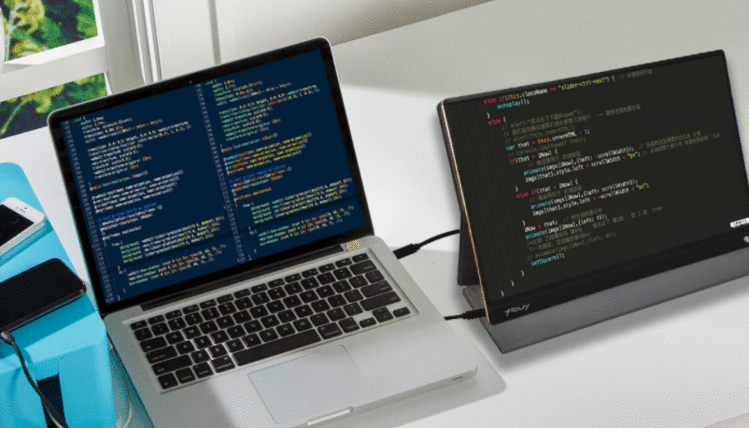我想要一个带有图像内容视图的滚动视图.图像实际上是比屏幕大得多的地图.地图应该最初位于滚动视图的中心,就像将iPhone转为横向时照片应用程序中的照片一样.

我没有设法将地图放在中心,同时正确缩放和滚动.如果地图图像从屏幕顶部开始(纵向),则代码如下所示:
- (void)loadView {
mapView = [[UIImageView alloc] initWithImage:[UIImage imageNamed:@"map.jpg"]];
CGFloat mapHeight = MAP_HEIGHT * SCREEN_WIDTH / MAP_WIDTH;
mapView.frame = CGRectMake(0, 0, SCREEN_WIDTH, mapHeight);
scrollView = [[UIScrollView alloc] initWithFrame:CGRectMake(0, 0, SCREEN_WIDTH, SCREEN_HEIGHT)];
scrollView.delegate = self;
scrollView.contentSize = mapView.frame.size;
scrollView.maximumZoomScale = MAP_WIDTH / SCREEN_WIDTH;
scrollView.minimumZoomScale = 1;
[scrollView addSubview:mapView];
self.view = scrollView;
}
当我将图像帧移动到中心时,图像仅从其帧的顶部向下生长.我尝试使用mapView变换,动态更改imageView的帧.到目前为止,对我来说没什么用.
此代码应适用于大多数iOS版本(并且已经过测试,可以在3.1版本上运行).
它基于Jonah的答案中提到的Apple WWDC代码.
将以下内容添加到UIScrollView的子类中,并将tileContainerView替换为包含图像或切片的视图:
- (void)layoutSubviews {
[super layoutSubviews];
// center the image as it becomes smaller than the size of the screen
CGSize boundsSize = self.bounds.size;
CGRect frameToCenter = tileContainerView.frame;
// center horizontally
if (frameToCenter.size.width < boundsSize.width)
frameToCenter.origin.x = (boundsSize.width - frameToCenter.size.width) / 2;
else
frameToCenter.origin.x = 0;
// center vertically
if (frameToCenter.size.height < boundsSize.height)
frameToCenter.origin.y = (boundsSize.height - frameToCenter.size.height) / 2;
else
frameToCenter.origin.y = 0;
tileContainerView.frame = frameToCenter;
}
这是我考虑的问题,因为它的解决方案就像苹果的照片应用程序一样.我一直在使用以下解决方案:
-(void) scrollViewDidEndZooming:(UIScrollView *)scrollView withView:(UIView *)view atScale:(float)scale
重新定位,但我不喜欢这个解决方案,因为在缩放完成后,它会反弹然后快速'跳'到中心,这是非常不性感的.如果你几乎完全相同的逻辑,但在这个委托函数中,结果证明:
-(void)scrollViewDidZoom:(UIScrollView *)pScrollView
它都从中心开始,当你缩小时它保持居中:
-(void)scrollViewDidZoom:(UIScrollView *)pScrollView {
CGRect innerFrame = imageView.frame;
CGRect scrollerBounds = pScrollView.bounds;
if ( ( innerFrame.size.width < scrollerBounds.size.width ) || ( innerFrame.size.height < scrollerBounds.size.height ) )
{
CGFloat tempx = imageView.center.x - ( scrollerBounds.size.width / 2 );
CGFloat tempy = imageView.center.y - ( scrollerBounds.size.height / 2 );
CGPoint myScrollViewOffset = CGPointMake( tempx, tempy);
pScrollView.contentOffset = myScrollViewOffset;
}
UIEdgeInsets anEdgeInset = { 0, 0, 0, 0};
if ( scrollerBounds.size.width > innerFrame.size.width )
{
anEdgeInset.left = (scrollerBounds.size.width - innerFrame.size.width) / 2;
anEdgeInset.right = -anEdgeInset.left; // I don't know why this needs to be negative, but that's what works
}
if ( scrollerBounds.size.height > innerFrame.size.height )
{
anEdgeInset.top = (scrollerBounds.size.height - innerFrame.size.height) / 2;
anEdgeInset.bottom = -anEdgeInset.top; // I don't know why this needs to be negative, but that's what works
}
pScrollView.contentInset = anEdgeInset;
}
UIImageView你正在使用'imageView'的地方.
Apple已向iphone开发者计划的所有成员发布了2010 WWDC会话视频.讨论的主题之一是他们如何创建照片应用程序!他们逐步构建一个非常相似的应用程序,并使所有代码免费提供.
它也不使用私有api.由于非公开协议,我不能在此处放置任何代码,但这里是示例代码下载的链接.您可能需要登录才能获得访问权限.
http://connect.apple.com/cgi-bin/WebObjects/MemberSite.woa/wa/getSoftware?code=y&source=x&bundleID=20645
并且,这是iTunes WWDC页面的链接:
http://insideapple.apple.com/redir/cbx-cgi.do?v=2&la=en&lc=&a=kGSol9sgPHP%2BtlWtLp%2BEP%2FnxnZarjWJglPBZRHd3oDbACudP51JNGS8KlsFgxZto9X%2BTsnqSbeUSWX0doe%2Fzv%2FN5XV55%2FomsyfRgFBysOnIVggO%2Fn2p%2BiweDK%2F%2FmsIXj
 京公网安备 11010802040832号 | 京ICP备19059560号-6
京公网安备 11010802040832号 | 京ICP备19059560号-6